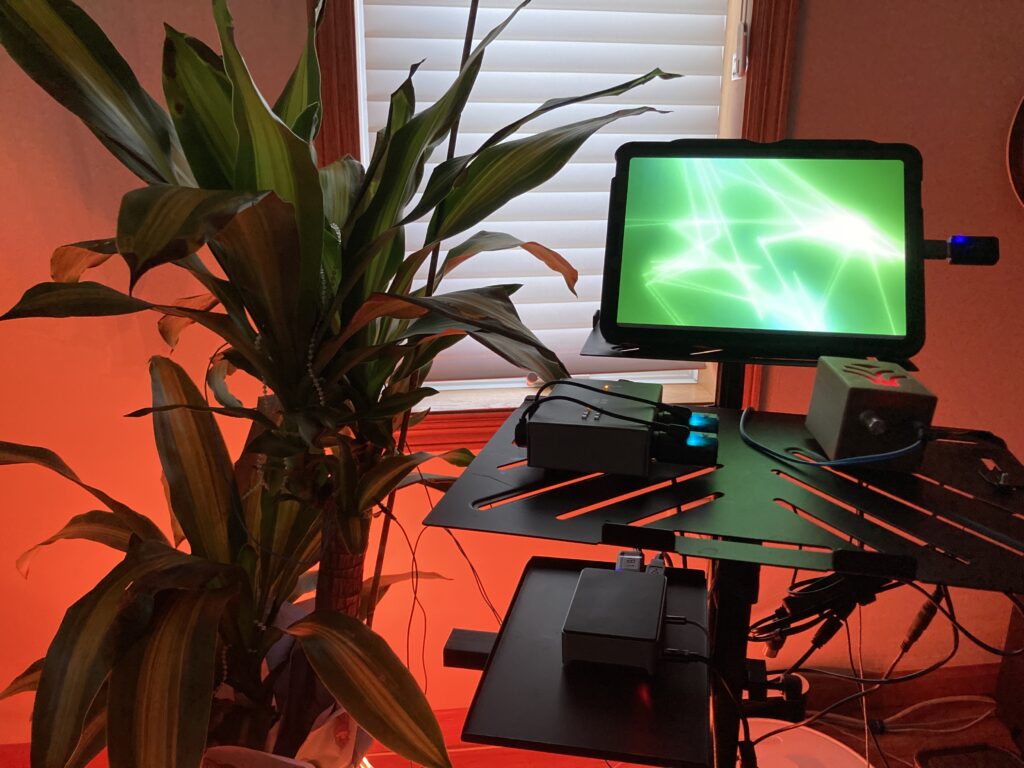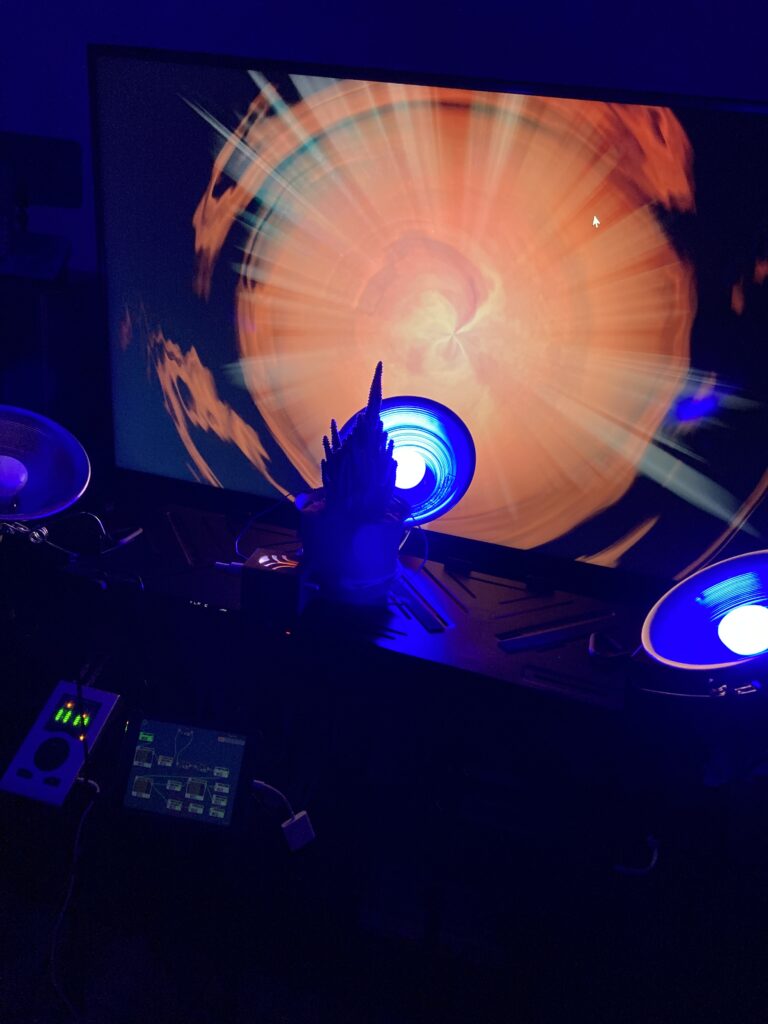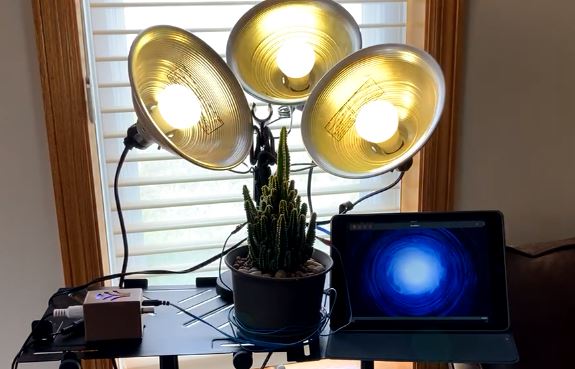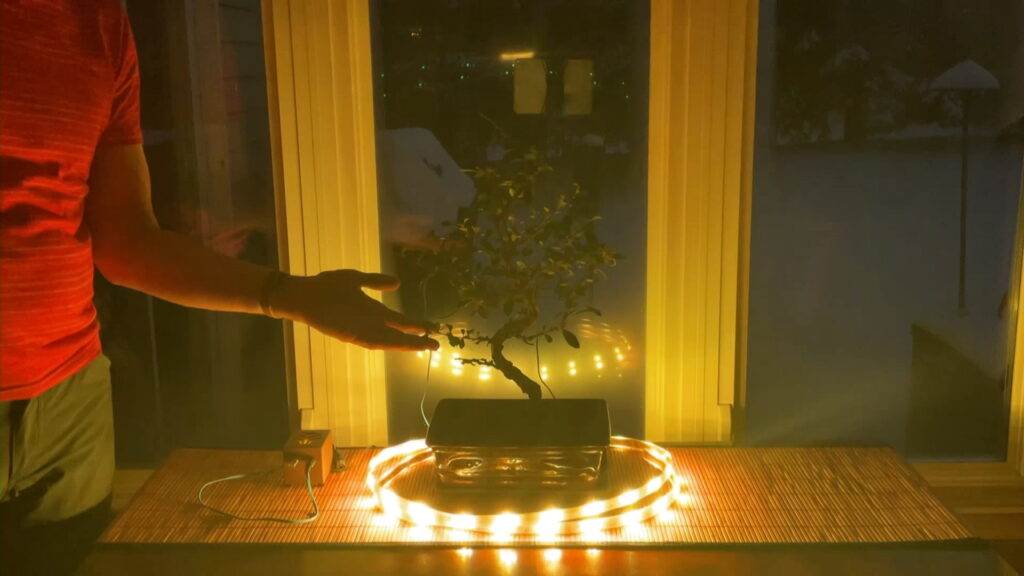We have already discussed music’s ability to help us learn more about ourselves and connect with other people. However, how could we get in touch with our surroundings? Plants, to be more precise? Well, of course, through music! Yep, you heard us right. Let us introduce you to Rich Thomsen – an artist from the USA who uses sound and light to inspire a connection between people and the environment. In this short interview, you will learn all about Rich’s creative journey, his unique project Leaf Secrets, and many more!
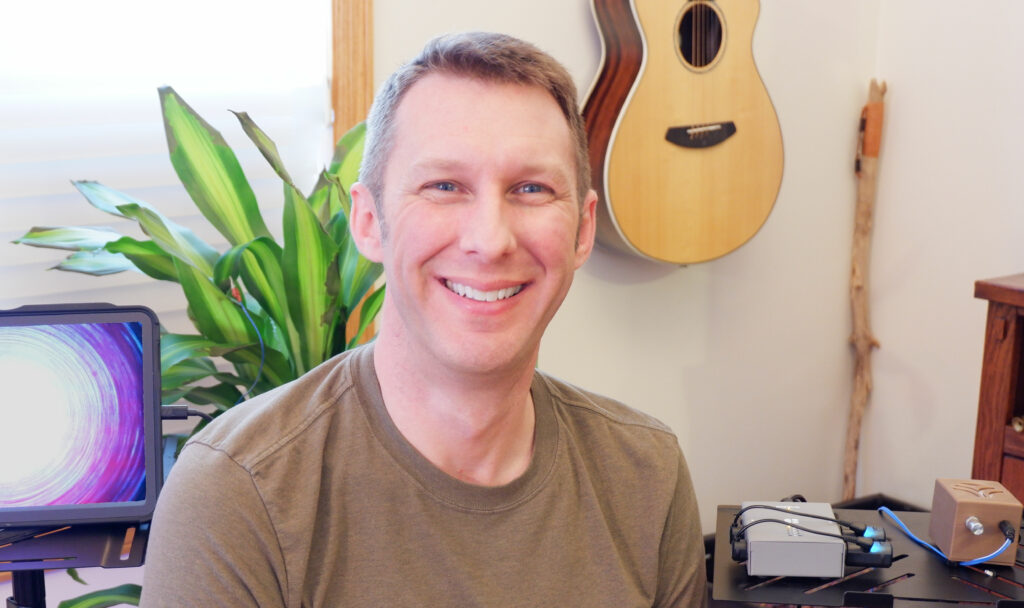
When did you realize that you have a passion for music, and what were your first steps in bringing your ideas to life?
I grew up listening to my sister practicing piano in the living room. I also remember going to recitals, band concerts, and variety shows that I would later want to participate in. The earliest memories I have of creating music were on a Casio SK-5 sampling keyboard that I bought at a department store for $50. I enjoyed sampling sounds and creating basic songs early in my teen years. A couple of things happened in high school that really boosted my creativity (and the beginning of “Gear Acquisition Syndrome”). My parents gave me a Yamaha keyboard as a gift, and I couldn’t stop playing it. It had easy-to-arrange patterns that I used to make background tracks for songs. Once I was able to perform my own songs at talent shows, I was hooked. Around the same time, I became interested in recording technology. A double cassette deck became a Tascam Portastudio, which led to a Yamaha 8-track, and eventually digital recording, by the time I was in college.
How and when did you begin working with SquareSpiral, and what would you say you gained from this collaboration?
Beck (Hansen) released a sheet music collection in 2013 called “Song Reader” and invited musicians to record and share their interpretations. I recorded some of these songs and shared them on SoundCloud. SquareSpiral (Chris Upfield) commented on one, suggesting, ‘how about some strings right here’. I remember asking if he’d be willing to do just that if I shared my audio files. I learned that he was also using the same DAW (Cakewalk Sonar), and we started exchanging tracks. SquareSpiral added instrumentation and mixed my Reinvention album, a collection of songs from the Song Reader project. The turning point in our collaboration was when he sent back a completely reimagined version of my “Eyes That Say I Love You”. I was blown away by how much better it was than what I had put together. That experience allowed me to focus more on drafting new songs, writing original lyrics, and singing. Working together gave us an international audience (he is in the U.K, while I am in the U.S.) and perspectives we never would have gotten had we ‘kept it local’.
You have already released an album called “Reinvention” in 2014 and EP “Making the Fire” in 2018. What is your usual creative process when working on these bigger projects? When and how do you know that you have a finished album/EP?
Reinvention was just that – I had been away from music-making for several years. That project and the internet community aspect of the source material – Beck’s “Song Reader” – appealed to me. I had just obtained an Alesis SR-18 drum machine. So there were two enablers there: new gear and the starting lyrics and chords for me to build off of. It was like making covers for songs no one had heard before, which appealed to me. I dialed in a drum pattern on the SR-18, picked up an instrument, and tried out styles until they felt right.
“Making the Fire” was a little different. The original songs started as piano/vocal drafts. I’d send them to SquareSpiral via email. If the song interested him, a few days later, he’d send over some ideas with electronic production. This was all over email. I don’t think I ‘talked’ to him until after we were all done! I recall half a dozen back-and-forths to reach our’ good enough’ musical concept, at which point I’d record new sets of vocals. The last couple of rounds involved small adjustments until there just weren’t any more left. Another strong possibility is that SquareSpiral would send me a track that had _FINAL_ in the filename, and I simply accepted it! “Done” for the EP was mostly due to time. We both had other full-time jobs. After several years of working together off and on, I wanted to release a collection before our lives took us in other directions.
Would you please tell us more about your project “Leaf Secrets”? How did you come up with this idea, and why did you feel the need to make it?
My daughter told me about devices that could be hooked up to plants as a form of generative music. I obtained one of these, a ‘MIDI Sprout’, on eBay and began experimenting with it on her succulents. “Harlan” the cactus had the most interesting patterns and had notable reactions when touched or when there were disturbances in the room. Around the same time, the book ‘The Hidden Life of Trees’ by Peter Wohlleben was recommended to me at a local bookstore. I was fascinated with a discovery in the book that plants “communicate” underground via fungal networks. While this does not mean ‘plant’ is a language we’ll be learning on Duolingo any time soon, I like the idea of using art to explore the concept of plant communication and our impact on nature.
My original prototypes for Leaf Secrets used a desktop computer to trigger lights and visualizations. I wanted to create a portable setup that I could pack up in a shoebox and take out of my house. When I learned that the programs I was using to trigger Philips Hue lights ran on Linux, the Raspberry Pi computer was a natural choice. While I wasn’t sure if I would use the Pi to produce sounds, as a musician, I knew I wanted an OS tuned for audio. Patchbox OS offered me an easy way to get started.
You have recently received our Midihub. In which projects do you plan to include it, and how do you think it will benefit them?
I am really excited about the Midihub. It is the central MIDI interface in my composition setup and an important part of my Leaf Secrets project. The multiple ports, combined with CME WIDI (Bluetooth MIDI) devices, provide a simple way for me to bring a setup with me. The visual Midihub Editor allows me to change the scale, add MIDI note effects, and route MIDI between different instruments without complex scripts. I like the reliability of the hardware and the ability to easily monitor what is coming in and out of each processing pipeline.
Your sound is very unique yet in some way familiar. What other sounds and creators influence you?
I grew up in the late 80s and early 90s listening to INXS, Faith No More, U2, and Depeche Mode. My current favorites include Metric, Chvrches, Band of Skulls, and Muse. When I think about ‘plant music’, I am reminded of the ‘Hearts of Space’ radio program by Stephen Hill, which features ambient and new-age space music. Finally, I’d like to highlight Data Garden as the creator of the MIDI Sprout (which has evolved into “Plantwave”). Their devices inspired me by helping me see music in nature, all around me.
Could you please share your future plans with us? Any exciting projects or songs coming our way?
I am most excited about expanding the concept first presented in the “Harlan” videos so that more people can enjoy it. My dream is to make it bigger – more light, more sound, and multiple plants, to give people a sensory experience they will remember. I am developing configurations small enough to bring into a classroom or large enough to bring novelty to an outdoor arts event in the summer.
Follow Rich Thomsen
Official WebsiteLeaf Secrets Website
